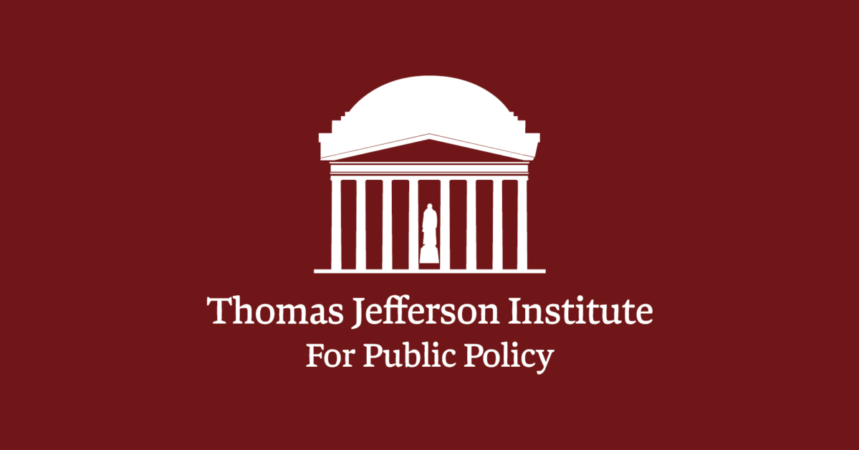Virginians, hold on to your wallets. Gov. Timothy M. Kaine and the General Assembly are looking for ways to close the large and growing transportation funding gap, and the only ideas we’re hearing in Richmond these days involve variations on the tax-hike theme. Before considering a variety of sales tax increases of 20 percent and higher, there should be a fundamental rethink of current transportation policy and planning to ensure that we’re taking advantage of every opportunity for more efficient infrastructure delivery.
Where do we start?
First, we need to make sure we’re getting the most bang for the buck from current spending. Chances are that many, if not all, current regional transportation plans in the Commonwealth will spend billions of dollars to achieve little measurable congestion relief. For example, the Metropolitan Washington Council of Governments’ long-range transportation plan will spend billions of dollars on D.C.-area transportation projects in coming decades, but the organization admits that the percentage of congested lane miles will still increase even after building everything in their plan.
Shouldn’t we be aiming to actually reduce congestion, not just slowing the rate at which it worsens? Texas and Georgia are doing this by requiring regional planners (who decide the bulk of spending allocations) to set their sights on reducing congestion relative to today’s levels. Like these states, we need to make congestion relief a core goal of transportation planning in Virginia and ensure that the state is making the most efficient use of limited transportation funds. This requires performance-based planning – prioritizing projects based on objective measures of congestion relief. The standard for ranking transportation investments should be the total hours of delay-reduction produced for each million dollars of project investment.
Next, we also need to continue giving priority to maintaining our existing roads and bridges and find more efficient ways of doing it. For several years now, we’ve seen maintenance costs rise while gas tax revenues fall, and leaders have done the right thing by shifting ever-increasing amounts of funds from the new construction account to the maintenance account. The problem is that the Commonwealth is now at the point where there’s not enough money in the pot to fund all of the state’s maintenance needs.
To maintain safety and system quality, the state should be looking to get the most out of its maintenance dollars. Virginia has historically been a pioneer in the use of private-sector contracting for road maintenance, generating significant cost savings and improving the quality of roads and bridges. The Commonwealth has generated an estimated six percent to 15 percent cost savings through contracting with the private sector to maintain more than 1,000 miles of Interstates, and Florida has seen an approximately 15 percent savings across some 30 statewide maintenance contracts that account for a substantial portion of its overall maintenance budget. Virginia leaders should consider extending its successful Interstate model to all state-maintained roads and bridges.
Some cutting-edge, innovative contracting models are worthy of replicating. Missouri ‘s Safe and Sound Bridge Program may be the most impressive. In this project, the state will enter into a fixed-price contract with a private sector team to repair and rehabilitate a whopping 802 bridges over a five-year period and maintain these bridges for 25 years after. Moreover, the private team will finance the half-billion dollar project upfront. Missouri will pay nothing during the five years of construction work, followed by 25 years or more of annual payments that the state will treat as an operating expense using a portion of its federal bridge funds. No tolls are involved. Without private sector financing, it’s doubtful that the state could undertake such a large-scale project on its own using traditional procurement methods and revenue sources. Virginia ‘s transportation leaders should be evaluating similar opportunities.
Lastly, when it comes to planning new construction, we need to be far more proactive in pursuing tolling and public-private partnerships to deliver new capacity and to maintain what we have. The private-sector financing of transportation projects like the Dulles Greenway, the Capital Beltway high-occupancy toll (HOT) lanes, and the I-95/395 HOT lanes is delivering needed new capacity to congestion-choked areas. It would make sense to look at all limited-access highway projects with an eye first to private financing opportunities before planning them as tax-funded roads, which generally take longer to build and may take years to stockpile funding for under the “pay as you go” system.
Before resorting to tax hikes that will not solve the state’s long-term transportation funding problems, Commonwealth officials should apply strategies to ensure that we get the most out of existing dollars and take maximum advantage of outside private sector funding. Rising congestion threatens Virginians’ quality of life and economic prosperity, as the movement of people and goods slows to a crawl in too many places. Still, before asking taxpayers to pony up more to combat system deterioration and gridlock, it’s only reasonable to assure them that their current tax dollars are being spent in the most effective and efficient manner.






